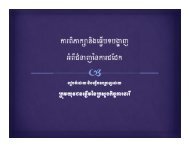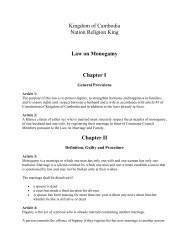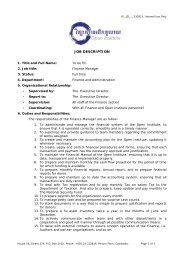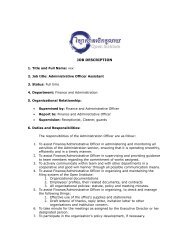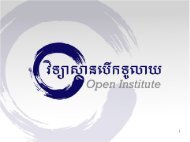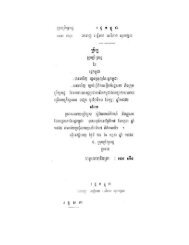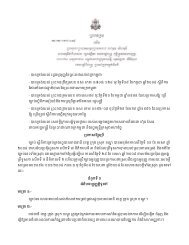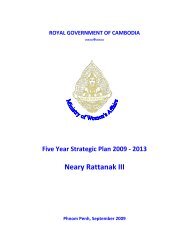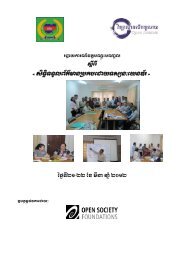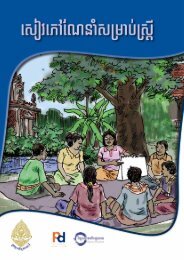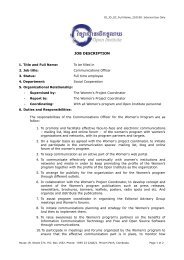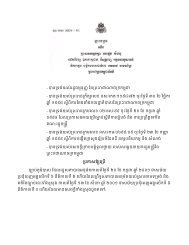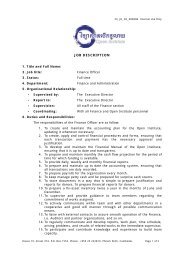Education Education An approach to some basic Indicators for ...
Education Education An approach to some basic Indicators for ...
Education Education An approach to some basic Indicators for ...
You also want an ePaper? Increase the reach of your titles
YUMPU automatically turns print PDFs into web optimized ePapers that Google loves.
Catalog of Indica<strong>to</strong>rs Work/Labor 103 Name of indica<strong>to</strong>r: Labor <strong>for</strong>ce participation rateDefinition: Labor <strong>for</strong>ce is called active population. Labor Force refers <strong>to</strong> persons 15 -‐ 64 years who contribute or are available produce goods and services in the country, so it is the <strong>to</strong>tal active population employed and unemployed. This indica<strong>to</strong>r consists of everyone of working age, that is employed or seeking employment. It provides an indication of the relative size of the supply of labor that is available <strong>for</strong> the production of goods and services in the economy. Note: People in those age groups who are not counted as participating in the labor <strong>for</strong>ce are typically students, homemakers, and persons under the age of 64 who are retired. Description: The labor <strong>for</strong>ce participation rate is a key component in long-‐term economic growth, almost as important as productivity. It is not considered active population who per<strong>for</strong>ms work without remuneration, <strong>for</strong> example, home care or study, but not in the market looking <strong>for</strong> work in paid employment (ie, not incorporated in<strong>to</strong> the labor market). This indica<strong>to</strong>r helps when you know how much labor is available in a country. Compared with the unemployment rate, this indica<strong>to</strong>r shows a state's capacity <strong>to</strong> create jobs. Sec<strong>to</strong>r: Work/EmploymentSubsec<strong>to</strong>r: Employment Sources: [1] KEY INDICATORS FOR ASIA AND THE PACIFIC 2010. Asian Development Bank. 2010. [2] Development Indica<strong>to</strong>rs Reference Manual: CONCEPTS AND DEFINITIONS. Asian Development Bank. 2004. [3] Tools and indica<strong>to</strong>rs <strong>for</strong> gender impact analysis, moni<strong>to</strong>ring and evaluation. Economic Commission <strong>for</strong> Latin America and the Caribbean. 2002. [4] Female labor <strong>for</strong>ce participation. OECD 2004 [5] Labor <strong>for</strong>ce survey of Cambodia. 2001. NIS Unit of measuring: Percentage Formula: LFPR = WP 15−64P×100 ; For women: WLFPR = WW 15−64P×100 Formula explained: It is the working population with 15-‐64 ages and the population seeking <strong>for</strong> a job with the same ages divided by the <strong>to</strong>tal population (all ages) and all it multiplied by 100. In <strong>for</strong>mula: LFPR= Labor <strong>for</strong>ce participation rate; WP(15-‐64)= Working population and population seeking <strong>for</strong> a job with 15-‐64 ages; P= Total population (all ages). For women: WLFPR = Women Labor <strong>for</strong>ce participation rate; WW (15 -‐ 64)= working women and women seeking <strong>for</strong> a job with 15




